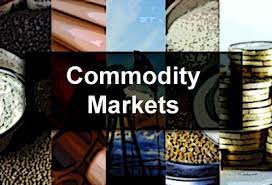What Is Commodity Market?

If you’re not familiar with commodity markets, you may be wondering, what exactly is a commodity market? Agricultural commodities, for example, are traded in the commodity market, and they are heavily influenced by seasonal cycles and harvesting. When harvesting season is expected to begin, prices typically increase, and fall when harvesting is finished. Extreme weather changes can also affect natural materials production and transportation. For example, cold weather can freeze the ground, reducing output and causing prices to rise. The process of trading commodities is very similar to other markets, with buyers and sellers interacting, exchanging information, and setting current and future prices.
Commodity markets are regulated by a government body
The U.S. government has a long history of regulating the commodity markets. In the early 1800s, the Chicago Board of Trade was formed and began trading grains. It was not until the late 1920s, however, that the government started to regulate the markets. In 1974, the government created the Commodities and Futures Trading Commission (CFTC), which now regulates all futures and options markets. In the 1990s, the CFTC expanded its mandate to cover U.S. government securities, commodities, and foreign stock indices. The CFTC was also given the authority to regulate single stock futures. Single-stock futures began trading in November 2002.
CFTC is an independent federal agency headed by five commissioners appointed by the President. The CFTC has steadily expanded its role in overseeing the futures and options markets, despite fierce opposition from commodity exchanges. Commodity exchanges are primarily self-regulated, but federal regulators have demonstrated their clout by temporarily shutting down the commodity markets twice in the past year. Their recent actions have pushed many exchanges to act against irregularities.
They are a place where commodities are bought and sold
The financial world divides commodities into two categories: hard and soft. Hard commodities include energy like crude oil, gasoline, natural gas, and heating oil. Prices for these commodities have historically increased with demand and are volatile. Oil is limited in supply and is a hot commodity, affecting oil prices due to the global economic downturn, OPEC regulations, and a shift toward renewable energy. Soft commodities are less tangible and more abstract, like cotton, frozen orange juice, and sugar.
In economics, a market is an exchange where a commodity is bought and sold. It may be a place where commodities, like wheat, coffee, or tea, are bought and sold for a certain price. Whether a commodity is sold for gold, oil, or wheat, there are buyers and sellers in the market. There are several different types of markets, and the prices of these commodities change according to the economic conditions.
They are dominated by arbitrageurs
Traders in commodity markets are called arbitrageurs because they try to take advantage of mispricing in commodities by buying them at a price below the price in another market. In some cases, they own storage facilities and manage their inventory in tandem with futures prices. These traders also work for governments by keeping an eye on the futures markets. They may also be referred to as basis traders.
Using inter-exchange, arbitrageurs can exploit price differences between two commodity futures contracts to generate profits. These price differences are created by different factors such as liquidity, market instability, and contract specifications. By taking advantage of these differences, arbitrageurs can generate large profits in a short period of time. Arbitrageurs also make use of spread trading to minimize their risks. It’s important to be aware of the different types of trading and the risks involved.
They are volatile
The price volatility of commodities is a measure of the amount of change from day to day. It is the degree of this variation that determines the level of volatility. Prices in a commodity are determined by supply and demand, so high volatility signals extraordinary characteristics. In other words, when prices increase or decrease dramatically, the demand and supply factors are out of balance. This dynamic is particularly prevalent in commodity markets. If a commodity is experiencing high volatility, the market is either oversupplied or undersupplied.
This volatility in commodity prices is often attributed to the fact that raw materials are consumed by almost every human. The global demand for commodities is so huge that they can be produced for less than market price. This is a result of the supply and demand equation. Almost every human being consumes a commodity, making it a staple of our daily lives. However, the volatile price of raw materials is due to several factors. The most common causes of commodity volatility are wars and conflict, economic collapse, and political instruments.





